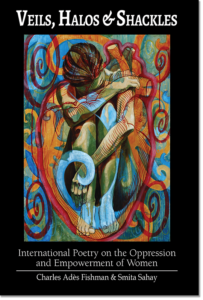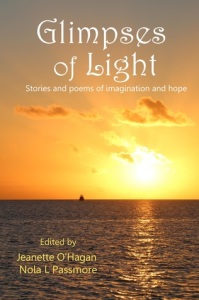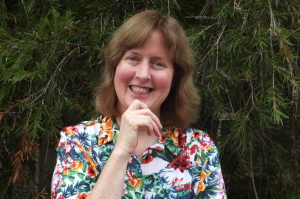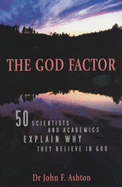Picture a defenceless child being dragged from their home by members of their community – people they trust and love. They scream as they are held down, and again as a cruel blade pierces their skin. They beg for help as their beloved mother looks on in tears, immobile. Everyone gathered hears their pain, witnesses their shame.
And no one
did anything
to stop it.
These are some of the concluding lines of my poem Severed from the Veils, Halos and Shackles (VH&S) anthology. This statement translates the wave of helplessness I experienced upon reading an article on Female Genital Mutilation (FGM), written by an aid worker in Africa. I knew about FGM, was aware it happened, but reading that article as a young mother made the practice horrifyingly personal.
My heart broke for the child who had been assaulted. Worse, there was nothing I could do to change it for them. Images plagued my mind, playing out the attack, watching the little one’s terror, hearing their cries. It challenged my comfortable existence, safe from such atrocities. Out of these roiling emotions I wrote Severed.
That was many years ago, well before the remarkable VH&S project had been birthed. What difference could one poem make? Yet, I felt I must pen those words.
 Then, thanks to visionaries Charles Fishman and Smita Sahay, poets worldwide were invited to contribute to a unique work focussed on the empowerment of women by sharing stories of the oppression against them. Through Charles’ and Smita’s persistence and dedication, VH&S came to have form and eventually found a home at Kasva Press, Israel.
Then, thanks to visionaries Charles Fishman and Smita Sahay, poets worldwide were invited to contribute to a unique work focussed on the empowerment of women by sharing stories of the oppression against them. Through Charles’ and Smita’s persistence and dedication, VH&S came to have form and eventually found a home at Kasva Press, Israel.
One could say each poem is just one of hundreds in a single work. One could say this poetry anthology is one of countless others. But in May 2015, while VH&S was still going through the publication process, Nigeria banned FGM. What a timely reminder of the need for this publication and the power of using one’s voice to instigate change. Other countries are gradually following suit in banning the practice of FGM.
To quote from the VH&S site:
Veils, Halos & Shackles aims not only to make a statement, but to make a difference—to shock, to startle, and above all, to inspire.
On her recent blog post, editor, former psychology academic and writer, Nola Passmore, reflected on her VH&S poem Petals, a reminder of hope in the midst of destructive abuse and pain. Our fellow South East Queensland contributor, gifted poet and author, Catherine Sercombe (also writing as Mazzy Adams), will follow this post on her blog on October 5, in anticipation of our online launch on October 8. Like the dozens of poets who have contributed over 240 poems to VH&S, each of us have a voice. Yes, we alone are only one, but one voice can apply a balm of healing words. One voice can inspire others to speak up. Over time, one voice can change the world.

 This is our final ‘Write Time’ guest blog. I don’t know about you, but I’m sorry to see the end of these insightful blogs. What I’ve found so great is the diverse angle each contributor’s brought to their post, and today is no exception as we welcome Nola Passmore to round out this series. Nola is a widely published poet and writer of short fiction and creative non-fiction, not to mention social psychologist and co-editor of the recently released ‘Glimpses of Light’ Anthology. She’s also in the throes of crafting an epic novel, which is bound to bear her stamp of excellence. But I’ll let Nola tell you more about that. Thanks, Nola. 🙂
This is our final ‘Write Time’ guest blog. I don’t know about you, but I’m sorry to see the end of these insightful blogs. What I’ve found so great is the diverse angle each contributor’s brought to their post, and today is no exception as we welcome Nola Passmore to round out this series. Nola is a widely published poet and writer of short fiction and creative non-fiction, not to mention social psychologist and co-editor of the recently released ‘Glimpses of Light’ Anthology. She’s also in the throes of crafting an epic novel, which is bound to bear her stamp of excellence. But I’ll let Nola tell you more about that. Thanks, Nola. 🙂